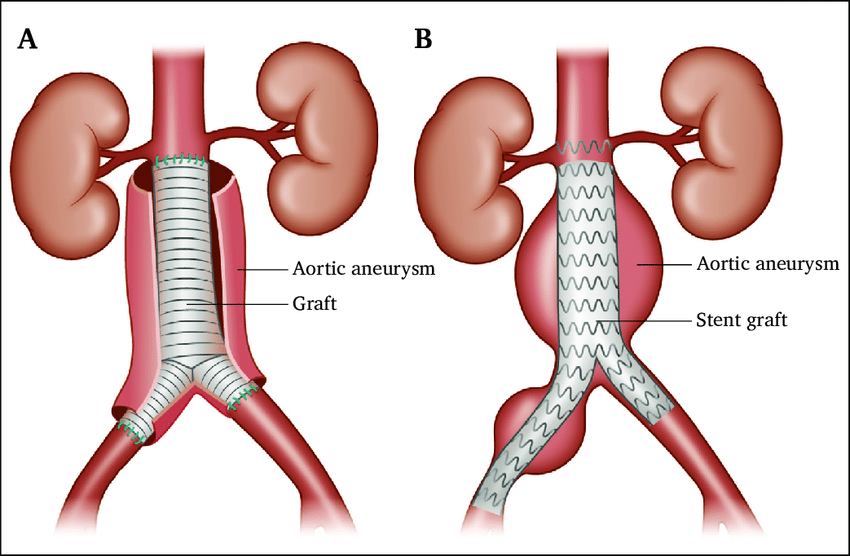Aortic Aneurysm Repair: Treating the Silent Threat to Your Heart
Introduction:
The aorta is the largest blood vessel in the body, responsible for carrying oxygenated blood from the heart to various organs. However, certain conditions can weaken the walls of the aorta, causing it to bulge or balloon outwards. This condition is known as an aortic aneurysm and can be a silent threat to your heart health. In this blog post, we will explore aortic aneurysm repair, a life-saving procedure that aims to treat this condition and prevent potentially life-threatening complications.

The Silent Threat: Understanding Aortic Aneurysms
Causes and Risk Factors
Aortic aneurysms can be caused by a variety of factors, including genetic predisposition, high blood pressure, smoking, and certain connective tissue disorders. Age and gender also play a role, with men over 65 being at higher risk. Understanding the underlying causes and risk factors can help identify individuals who may be more prone to developing an aortic aneurysm.
Identifying Symptoms and Early Detection
In many cases, aortic aneurysms do not cause noticeable symptoms until they rupture or dissect, making early detection crucial. However, some individuals may experience symptoms such as chest or back pain, shortness of breath, or a pulsating sensation in the abdomen. Regular check-ups and imaging tests can aid in the early detection of aortic aneurysms, allowing for timely intervention and treatment.
Surgical Options for Aortic Aneurysm Repair
Endovascular Aneurysm Repair (EVAR)
Endovascular aneurysm repair is a minimally invasive procedure that involves the placement of a stent graft through small incisions in the groin. The stent graft is navigated to the site of the aneurysm using X-ray guidance, reinforcing the weakened wall of the aorta and preventing the risk of rupture. EVAR offers a shorter recovery time and reduced post-operative complications compared to traditional open surgery.
Open Surgical Repair
Open surgical repair involves a traditional surgical approach where the damaged section of the aorta is replaced with a synthetic graft. This procedure is typically recommended for complex or large aneurysms or when the anatomy of the aorta is not suitable for endovascular repair. While open surgery requires a longer recovery period, it remains an effective and established technique for aortic aneurysm repair.
Post-Surgical Care and Long-Term Management
Recovery and Rehabilitation
After aortic aneurysm repair, a period of recovery and rehabilitation is necessary. Patients will be closely monitored in the hospital for any potential complications, and medications may be prescribed to manage pain and prevent infection. Gradually, patients can resume their normal activities, although strenuous exercises and heavy lifting may need to be avoided for a certain period.
Long-Term Management and Follow-Up
Following aortic aneurysm repair, long-term management is crucial to ensure continued cardiovascular health. Regular follow-up appointments and imaging tests will be scheduled to monitor the repaired aorta and detect any signs of potential complications. Maintaining a healthy lifestyle, including a balanced diet, regular exercise, and not smoking, is essential for the long-term well-being of individuals who have undergone aortic aneurysm repair.
Conclusion:
Aortic aneurysm repair is a vital procedure that aims to treat the silent threat posed by aortic aneurysms. Early detection, timely intervention, and appropriate surgical techniques can significantly improve outcomes and prevent potentially life-threatening complications. If you suspect you may be at risk for an aortic aneurysm or are experiencing related symptoms, consult with a healthcare professional to discuss your options and ensure your heart health is safeguarded.
An aortic aneurysm is a bulge or dilation in the wall of the aorta, the main artery that carries blood from the heart to the rest of the body. This condition can be life-threatening if left untreated.
Aortic aneurysms can result from various factors, including atherosclerosis, genetic predisposition, high blood pressure, trauma, or connective tissue disorders. Understanding and addressing risk factors are crucial for prevention.
Aortic aneurysms are often asymptomatic until they rupture. Symptoms may include sudden, severe abdominal or back pain, pulsating abdominal mass, chest pain, shortness of breath, or difficulty swallowing, depending on the location of the aneurysm.
We are associated with experienced and highly skilled medical professionals. We use the latest medical technology available in the world and we provide medical services in collaboration with JCI & NABH Certified hospitals only. Our services include various types of treatment and organ restructuring and transplant.
